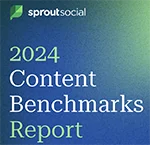Every social media pro knows the medium can start or amplify a crisis situation. A hacked Twitter account or video showing poor customer service may trigger a crisis.
All companies are bound to face a crisis due to social media's pervasiveness. If mishandled, the impact of a crisis could linger for years.
Many brands first ramped up their social media exposure in response to a crisis.
A good example occurred when Dominos Pizza came under fire following a video showing an employee defacing a pizza.
After a couple of days of tweets and posts, the CEO of Dominos responded with a video apologizing to the public for the incident and affirming the company's commitment to its customers.
That video, along with an advertising campaign trumpeting the company's desire to hear from its customers more regularly, helped to slow the damage this crisis had on its reputation.
The pizza chain now actively participates in social media by doing everything from solving customer service issues to sharing promotions with its online community.
It is widely believed that the company handled this crisis well, but there was considerable damage done to its reputation and it did create a greater sense of urgency to participate in social media.
There is no way to avoid a crisis like the one that befell Dominos. Dominos and consumer-oriented companies employ thousands of employees and run very complex operations.
The Dominos crisis was started by a few of its employees and a smartphone. The phrase "it could happen to anyone" has never been more appropriate.
While the crisis moment cannot be entirely avoided, there is an opportunity to leverage social data to help mitigate the impact of those events on the company's reputation.
My book, Digital Marketing Analytics: Making Sense of Consumer Data in a Digital World, highlights several social analytics tactics brands that can be deployed an ahead of a crisis so that a company is prepared to negate impact of a crisis.
Here are some of the tactics:
- Identify known issues and develop listening profiles for each issue – Research shows that 90 percent of issues that a company may face are known ahead of time. Unfortunately, most companies do not spend enough time documenting those issues. A critical first step is assembling the crisis communications taskforce and writing down as many potential events as can be articulated. After the issues have been documented then a listening profile can be created. Those profiles need to be constantly attended to in order to flag the issue before and isolated tweet turns into a trending topic.
- Know the current volume of conversation for each issue – If a company spends time documenting issues and creating a listening profile for each issue the next step is benchmarking the volume of conversation. Why does that matter? If a company knows what the normal volume of conversation is for an issue it will be much easier to identify when it might be emerging as a bigger threat.
- Understand where the conversation is currently taking place – One of the hallmarks of every successful crisis communication response is when the company responds on the same channel where the crisis broke. For example, the Dominos crisis previously cited broke via YouTube. When the CEO responded, he responded via YouTube. Knowing where issues are discussed most frequently can be helpful for a company in a couple of respects. First, if a company knows that an issue identified in step one is most often discussed on Twitter, for example, a listening profile can be honed to listen to that channel more specifically. Second, knowing what channel is most prevalent for an issue can assist in the development of content ahead of the crisis event.
- Profile pro/con influencers – Many of the issues that are identified in step one will have influential people on both sides of the debate. It is also very likely that those same people have an online presence. Has your company taken the time to identify whom the influencers are for those issues and, most importantly, if a crisis did hit how you would reach them with your story? If not, this is an important second step because knowing whom the negative influencers are helps to hone your listening profile. Similarly, knowing positive influencers is very important in assisting the company in getting its message out during a crisis.
- Analyzing the top positive and negative keywords – The obvious benefit to knowing the keywords used most often in conjunction with an issue is that it makes the listening effort easier. The second, and more important benefit is that knowing these keywords provides the company with an ability to use the language in its content (when appropriate) that an online community is already searching for and using in its discourse. Regardless of whether it's a crisis or day-to-day public relations activities, using the language of key stakeholders is a critical skill for all communicators.
Companies can't fully prevent a crisis from happening, but social data provides a unique opportunity for it to be prepared when it does hit.
Ask yourself whether or not your company is using social data in this way, and if you are properly prepared for a crisis.
![]() * * *
* * *
Chuck Hemann, group director of analytics at W20 Group, and Ken Burbary, chief digital officer at Campbell Ewald, wrote "Digital Marketing Analytics: Making Sense of Consumer Data in a Digital World."


 What if companies could harness the fury of online outrage into a force for good? This is precisely where companies can start turning the trolls into brand champions.
What if companies could harness the fury of online outrage into a force for good? This is precisely where companies can start turning the trolls into brand champions. Audiences interacted with brand content far more often on Facebook and Instagram in 2023 than they did via X (formerly Twitter), according to a report that tracked engagement trends across different social networks.
Audiences interacted with brand content far more often on Facebook and Instagram in 2023 than they did via X (formerly Twitter), according to a report that tracked engagement trends across different social networks. Can public relations help counteract the dissension fostered by the power of digital platforms to spread hate, fear and confusion?
Can public relations help counteract the dissension fostered by the power of digital platforms to spread hate, fear and confusion? The number of Americans who get their news from TikTok has quadrupled in the last three years, according to a recent Pew Research Center report.
The number of Americans who get their news from TikTok has quadrupled in the last three years, according to a recent Pew Research Center report.


 Have a comment? Send it to
Have a comment? Send it to 
No comments have been submitted for this story yet.